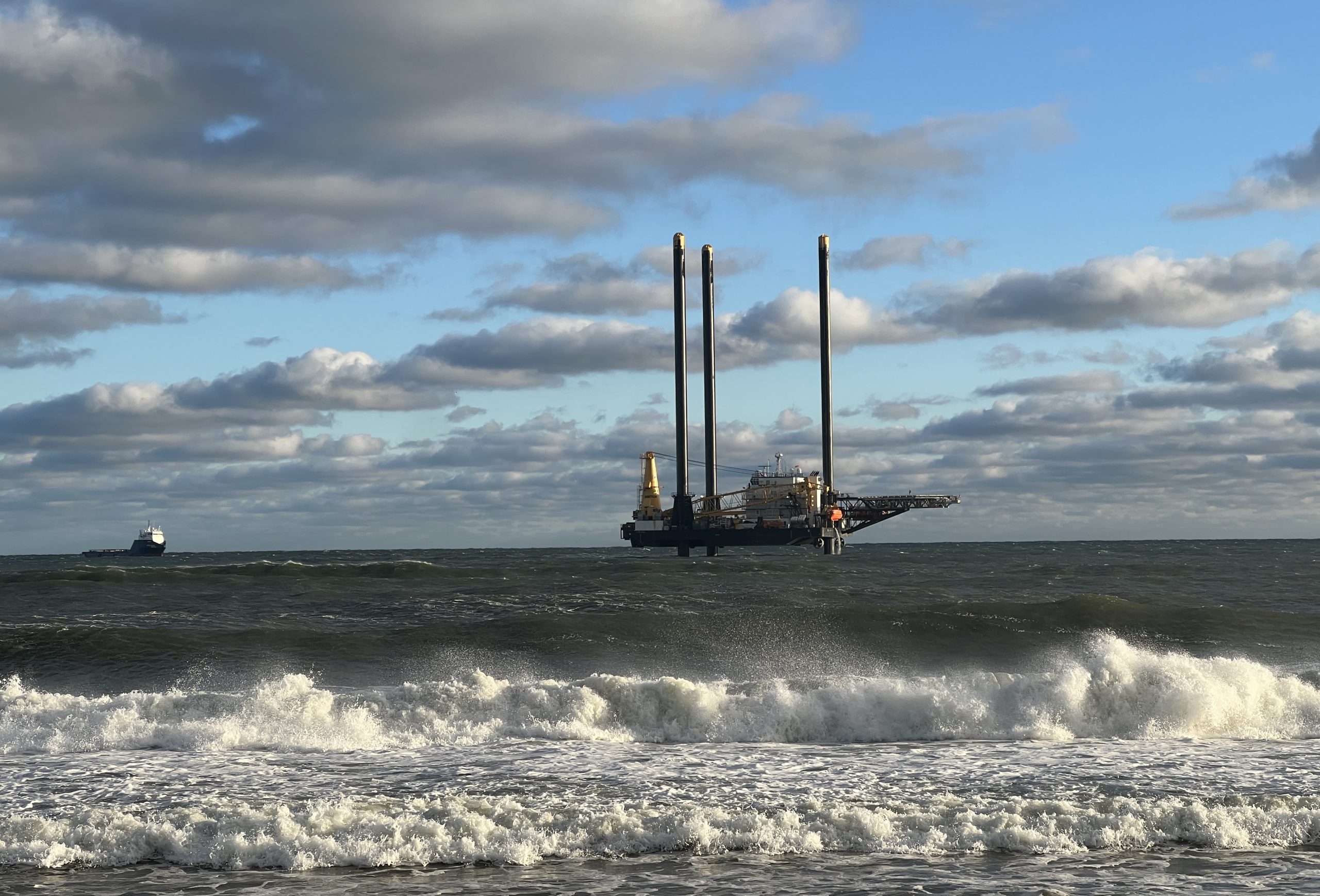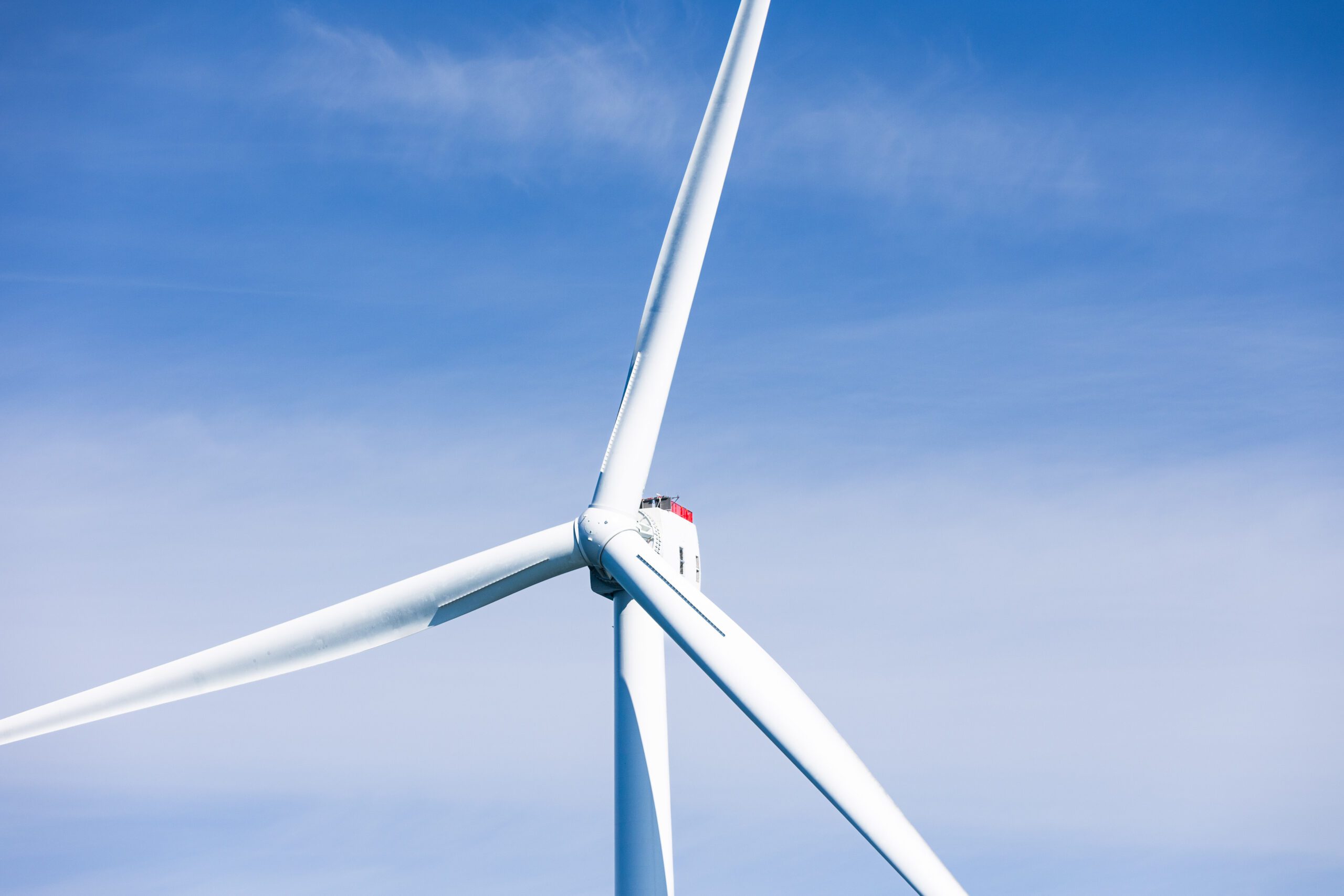By Josh Saul (Bloomberg) —
A drill as tall as a house stands on the blustery shore of the Atlantic Ocean, digging a tunnel deep under an exclusive New York beach. Soon workers will pull a cable through the sand to carry electricity from what is poised to be the first big offshore wind farm completed in US waters.
After more than a decade of stops, starts and high-profile failures, construction of a massive new US power source meant to displace planet-warming fossil fuels has finally begun at a turbulent time for the industry.
“It’s no longer about spreadsheets and Word documents,” said Jennifer Garvey, an executive with Danish wind developer Orsted AS, which is building the South Fork Wind farm in a joint venture with Massachusetts-based utility Eversource Energy. Garvey stood on the Hamptons beach on a cold morning in December and looked out at the Jill, a 183-foot-long ship working on the cable installation that was previously used on oil and gas projects in the Gulf of Mexico. “Now it’s about vessels and shovels in the ground.”
Offshore wind has picked up momentum in recent years thanks to vocal support from the Biden administration and ambitious targets set by New York, New Jersey and six other East Coast states. The South Fork project should start generating power in late 2023, which puts it on a similar timeline to the larger Vineyard Wind project off the coast of Massachusetts. And more projects are in the pipeline: Developers have plans for wind farms up and down the US East Coast, generating potentially as much electricity as 40 big nuclear power plants.
But as divers aboard the Jill plunge into the frigid water to work on the sea-to-shore tunnel for the cable that will connect the offshore wind farm 35 miles east of Montauk Point to the onshore electric grid, the industry is gearing up at a chaotic time. Soaring inflation and supply chain woes have forced some of the companies building big new wind farms to delay or even contemplate abandoning their projects.
Two separate developers raised doubts about their big offshore projects in October. New Jersey utility Public Service Enterprise Group Inc. said it was reviewing costs and deciding whether to pull out of Ocean Wind 1, a proposed project in the Atlantic Ocean that would generate 1.1 gigawatts — enough power for 500,000 homes. And just two weeks earlier, New England utility Avangrid Inc. said its similarly sized Commonwealth Wind project was no longer viable because of higher costs and supply chain woes.
Steel and copper prices, for example, both reached all-time highs over the past 18 months. After regulators last month demanded Avangrid indicate whether the wind farm would actually get built, the company said there was a path forward for the project but it needed to find a solution to its “unprecedented economic challenges,” caused in part by the ongoing war in Ukraine and increases in inflation and interest rates.
A difficult point for companies building offshore wind farms is they have to first lock in prices for the electricity they’ll sell to buyers — often local utilities — and then actually build the project. If material prices rise after they sign the contracts, that introduces a level of uncertainty that is tough to handicap, said RJ Arsenault, a managing director at FTI Consulting who advises offshore wind developers.
“It’s definitely had growing pains and those will continue,” he said. “It remains to be seen to what magnitude offshore wind becomes a vibrant market in the US.” Clean energy research firm BNEF forecasts that US offshore wind capacity will grow to almost 55 gigawatts by 2035, supplying an amount of power equivalent to 6% of the nation’s generation today.
Since the US offshore wind industry is so young, the supply chain for turbines and other materials basically doesn’t exist yet, said Troy Patton, Orsted’s head of program execution in the Americas. “For a while we’re going to be dependent on European suppliers,” said Patton, who served on a US Navy nuclear submarine before working on offshore wind in Europe.
But a US supply chain is developing, and Orsted and Eversource gave it a boost in 2019 when they committed to buying the underwater cables for their Northeast projects from a South Carolina factory. “It’s super fun to see hundreds of employees who were working retail or at Pizza Hut and are now making a living wage,” Patton said on the beach as work continued on the horizontal drilling that would pass under his feet.
Political developments have also shifted the ground for offshore wind. The Inflation Reduction Act allows for the tax credits bestowed on wind projects to be sold off, a financial boon for offshore wind developers. And a recent US decision that Chinese solar manufacturers are avoiding decade-old tariffs could actually help wind developers by casting a pall over new solar investments.
“Will that end up benefitting the wind industry because solar’s suddenly not as cheap?” said Becky Diffen, a lawyer at Norton Rose Fulbright who focuses on renewable energy. “There’s an interesting question.”
Orsted alone has a slate of six offshore wind projects it plans to build off the US East Coast by 2029. The company is building three of those with Eversource and the total cost of those wind farms is about $10 billion — and they’re not the only ones. Developers spent a record $4.4 billion in February just for the rights to install wind turbines off the New York and New Jersey coast in a blockbuster auction that underscored the surging enthusiasm for carbon-free electricity. And an auction for the rights to build floating turbines in the deeper waters off California drew almost $800 million, the second-largest ever in the US, with foreign developers dominating the winning bids.
The huge drill in the Hamptons stands near tall hedges and long driveways that lead to some of the most expensive and exclusive beach homes in the world, including a modernist glass-walled mansion that was featured in the HBO show “Succession” and sold last year for $45 million as well as an older 7,000-square-foot wooden home once owned by the Kennedy family. The wind farm faced opposition from fishermen and some locals, who sued because they didn’t want new underground cables in their town, but the project got the go-ahead after the developers agreed to compromises like installing 12 turbines instead of 15.
“Hopefully it makes a nice sandbar and I can surf off it,” said Andrew Thayer, a 34-year-old who drove his pickup truck onto the windy beach to eat a pizza. “I think it’s great.”
© 2022 Bloomberg L.P.
Unlock Exclusive Insights Today!
Join the gCaptain Club for curated content, insider opinions, and vibrant community discussions.

 Join The Club
Join The Club












